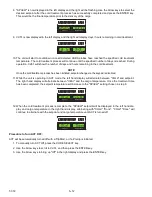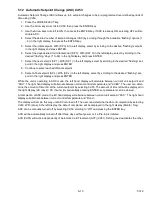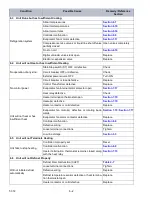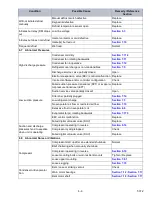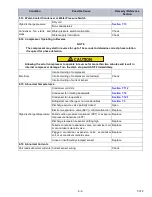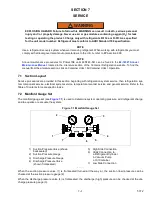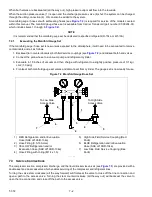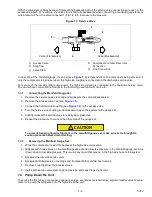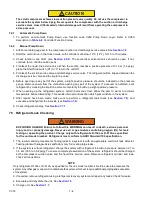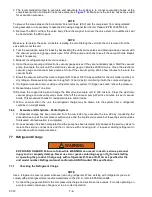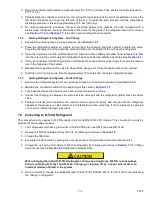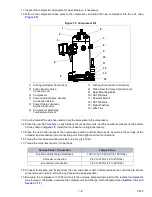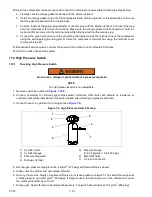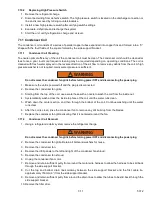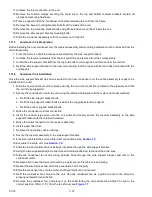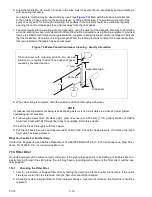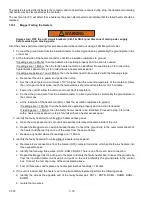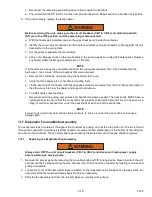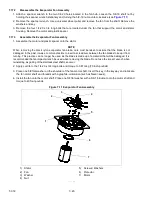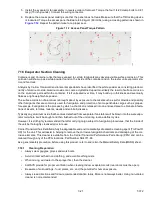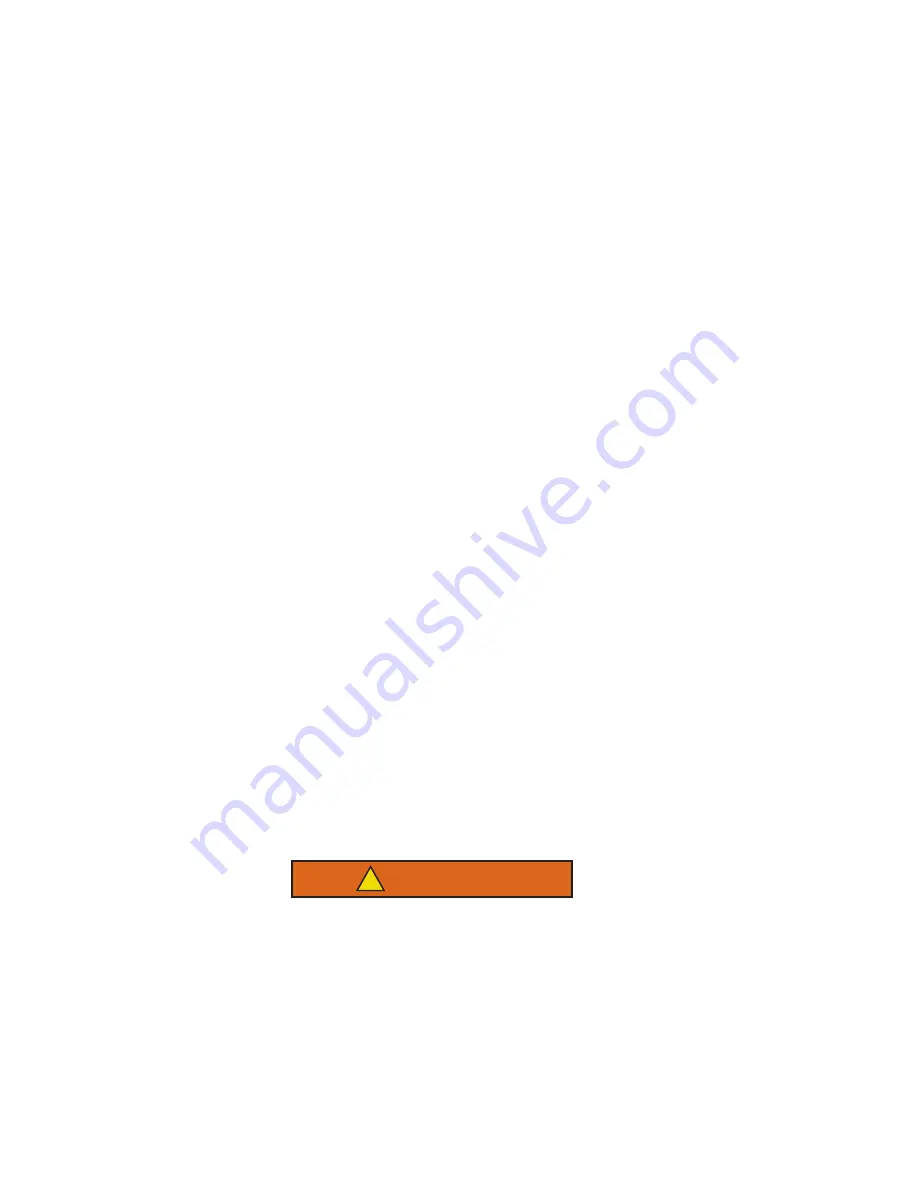
T-372
7–6
2. The recommended method to evacuate and dehydrate the system is to connect evacuation hoses at the
compressor suction and liquid line service valve (see
). Make sure the service hoses are suited
for evacuation purposes.
NOTE
To prevent the area between the Economizer Solenoid Valve (ESV) and the compressor from being isolated
during evacuation, it is necessary to open the ESV using a magnet tool (Carrier Transicold P/N 07-00512-00).
3. Remove the ESV coil from the valve body. Place the magnet tool over the valve stem. An audible click will
be heard when the ESV opens.
NOTE
Make sure to replace the valve coil before restating the unit. Starting the unit with the coil removed from the
valve will burn out the coil.
4. Test the evacuation setup for leaks by backseating the unit service valves and drawing a deep vacuum with
the vacuum pump and gauge valves open. Shut off the pump and check to see if the vacuum holds. Repair
leaks if necessary.
5. Midseat the refrigerant system service valves.
6. Open the vacuum pump and electronic vacuum gauge valves, if they are not already open. Start the vacuum
pump. Evacuate the unit until the electronic vacuum gauge indicates 2000 microns. Close the electronic
vacuum gauge and vacuum pump valves. Shut off the vacuum pump. Wait a few minutes to be sure the
vacuum holds.
7. Break the vacuum with either clean refrigerant (R-134a or R-513A as specified for the unit model number) or
dry nitrogen. Raise system pressure to roughly 0.14 bar (2 psig), monitoring it with the compound gauge.
8. If refrigerant was used, remove using a refrigerant recovery system. If nitrogen was used, relieve the pressure.
9. Repeat steps 6 and 7 one time.
10. Remove the copper tubing and change the filter drier. Evacuate unit to 500 microns. Close the electronic
vacuum gauge and vacuum pump valves. Shut off the vacuum pump. Wait five minutes to see if vacuum
holds. This procedure checks for residual moisture and/or leaks.
11. With a vacuum still in the unit, the refrigerant charge may be drawn into the system from a refrigerant
container on weight scales.
7.6.4
Evacuate and Dehydrate - Partial System
1. If refrigerant charge has been removed from the low side only, evacuate the low side by connecting the
evacuation set-up at the compressor suction valve and the liquid service valve but leave the service valves
frontseated until evacuation is completed.
2. Once evacuation has been completed and the pump has been isolated, fully backseat the service valves to
isolate the service connections and then continue with checking and, if required, adding refrigerant in
accordance with normal procedures.
7.7 Refrigerant Charge
WARNING
!
EXPLOSION HAZARD Failure to follow this WARNING can result in death, serious personal
injury and / or property damage. Never use air or gases containing oxygen (O
2
) for leak testing
or operating the product. Charge only with refrigerants R-134a or R-513A as specified for the
unit model number: Refrigerant must conform to AHRI Standard 700 specification.
7.7.1
Checking the Refrigerant Charge
NOTE
Use a refrigerant recovery system whenever removing refrigerant. When working with refrigerants you must
comply with all local government environmental laws. In the U.S.A., refer to EPA Section 608.
1. Connect the gauge manifold to the compressor discharge and suction service valves. For units operating on
a water-cooled condenser, change over to air-cooled operation.

